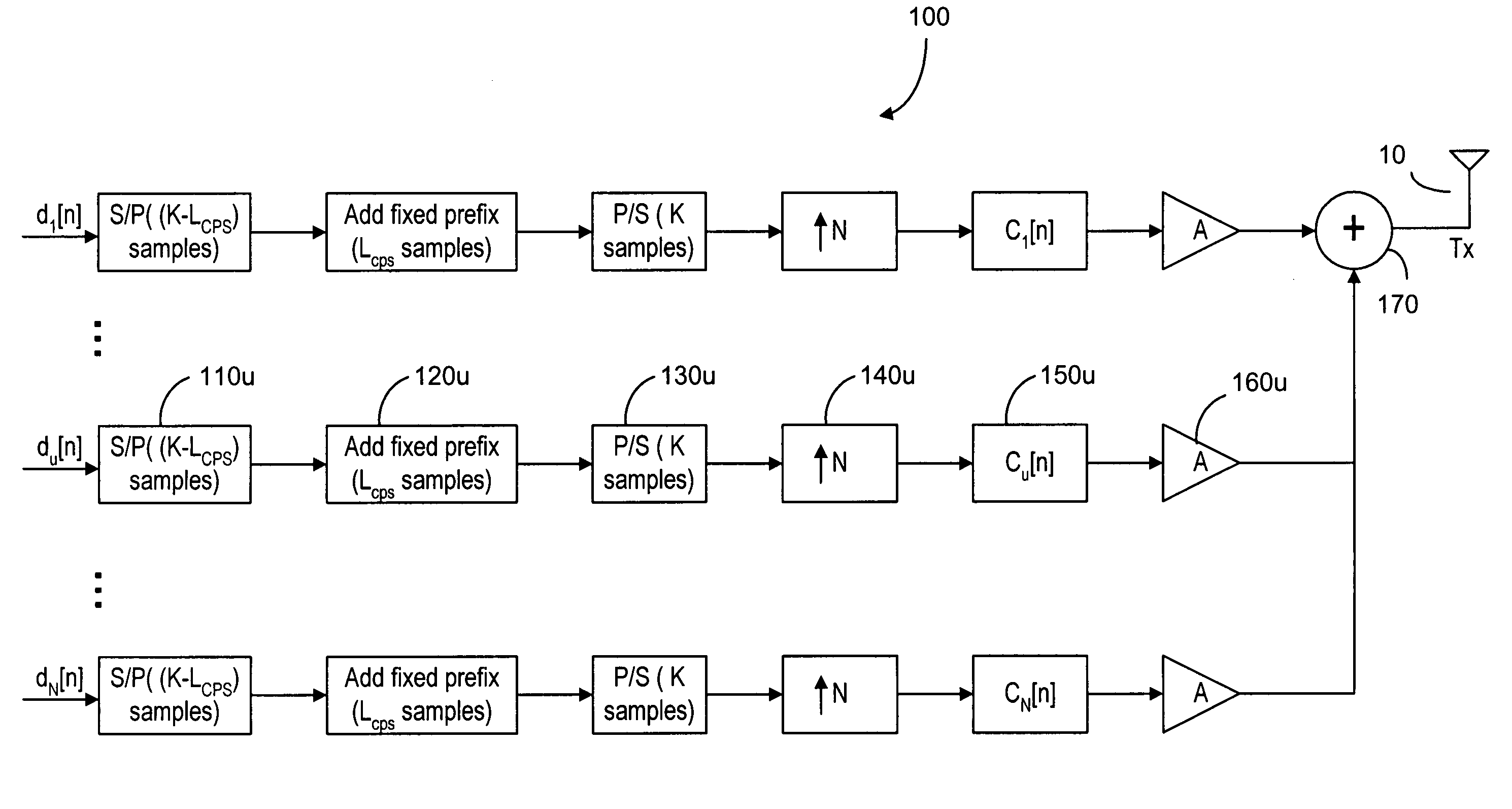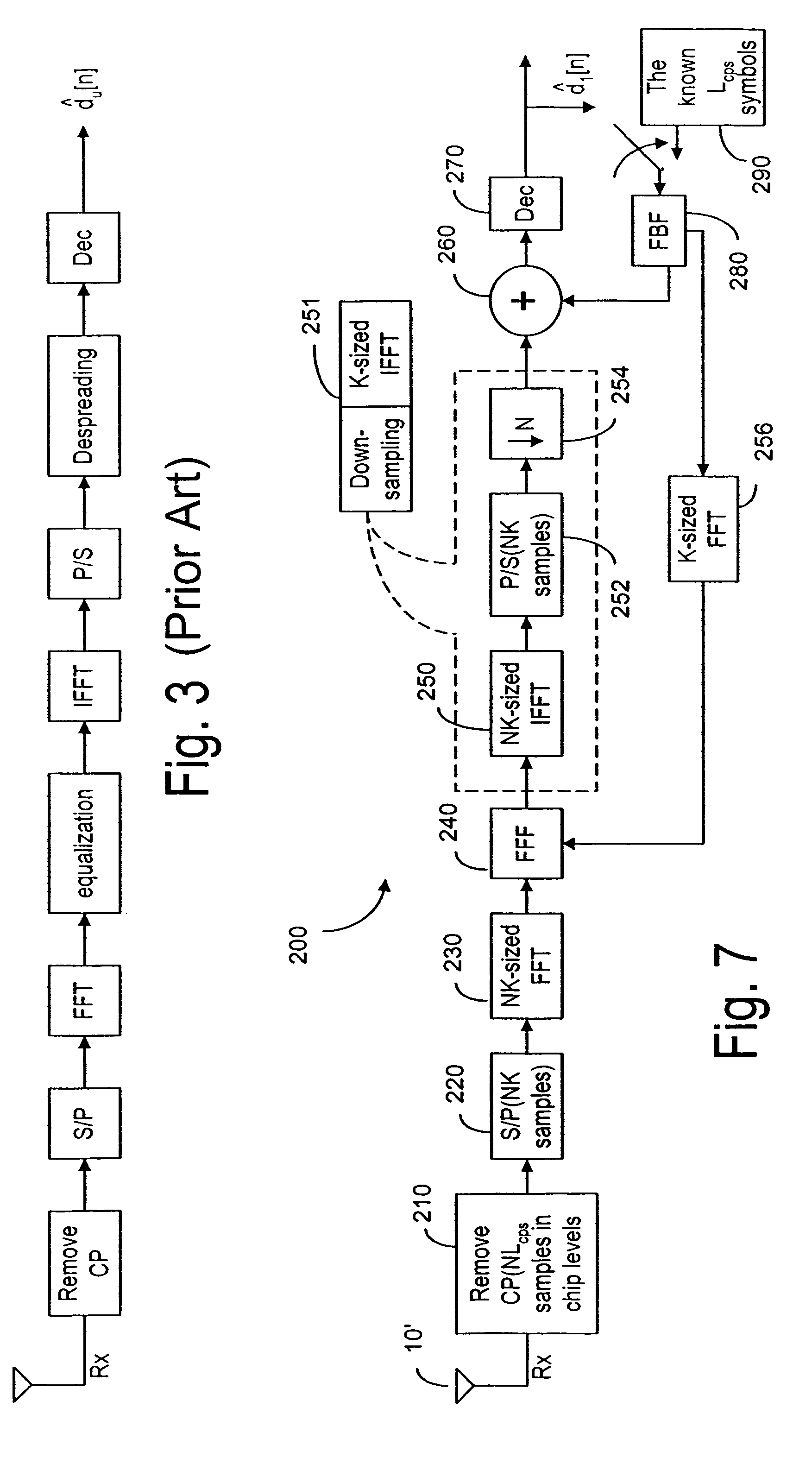Direct-sequence CDMA method and device
a direct-sequence, cdma technology, applied in the field of cdma communication, can solve the problems of frequency-selective fading and inter-symbolic interference (isi), the complexity of equalization in td could be very high, and the need for one-tap equalization, so as to improve the performance of the cp-cdma system and improve the system performan
- Summary
- Abstract
- Description
- Claims
- Application Information
AI Technical Summary
Benefits of technology
Problems solved by technology
Method used
Image
Examples
Embodiment Construction
[0076]In contrast to the conventional CP-CDMA where the cyclic prefix (CP) is added in chip level, the symbol-level CP is added to the CDMA signals in the transmitter, according to the present invention. In the transmitter 100 as shown in FIG. 4, the transmitted symbols du[n] are converted by a plurality of serial-to-parallel converters 110u into a plurality of data blocks with size (K-Lcps) of all the U code channels or users, and Lcps known symbols of the data block are added in front of the data block by block 120u. The CP added data block are converted by a parallel-to-serial converters 130u to a series of CP-added symbols. After being upsampled by blocks 140u, the CP-added symbols for the uth code channel is filtered by spread code cu[n] in block 150u. cu[n] is the uth user's spread code with a spread factor N. After the power of each code channel is allocated by block 160u, the code channels are combined by a summing module 170 for transmission via antenna 10. The details on s...
PUM
 Login to View More
Login to View More Abstract
Description
Claims
Application Information
 Login to View More
Login to View More - R&D
- Intellectual Property
- Life Sciences
- Materials
- Tech Scout
- Unparalleled Data Quality
- Higher Quality Content
- 60% Fewer Hallucinations
Browse by: Latest US Patents, China's latest patents, Technical Efficacy Thesaurus, Application Domain, Technology Topic, Popular Technical Reports.
© 2025 PatSnap. All rights reserved.Legal|Privacy policy|Modern Slavery Act Transparency Statement|Sitemap|About US| Contact US: help@patsnap.com



